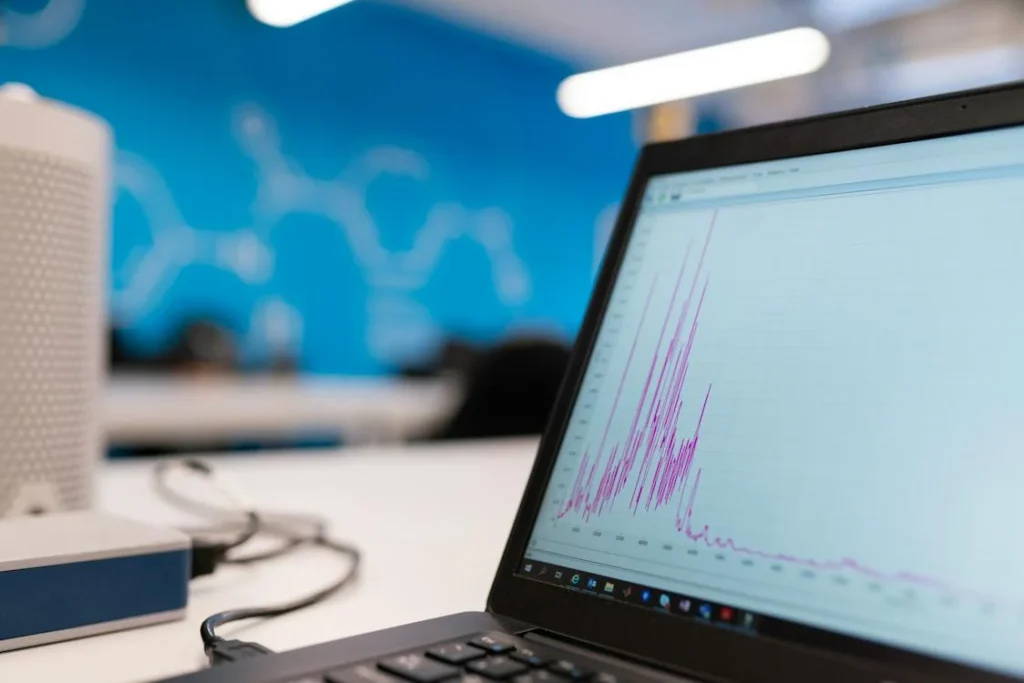(This Article has been revised, edited and added to, by Poulomi Chakraborty.)
In the digital age, where consumers are constantly bombarded with information, maintaining email engagement can feel like an uphill battle. But amidst the cacophony of digital communication, there’s a potent tool that marketers often overlook: retargeting. While many associate retargeting strictly with web ads, its application within email marketing is profound and holds the potential to redefine how we engage with subscribers.
Retargeting in the email context is not merely about reaching out again; it’s about rekindling interest, refocusing attention, and reviving engagement. Imagine it as a gentle nudge, reminding subscribers of the value you offer, right when they’re about to drift away. This strategy’s potential ROI can be significant, turning lukewarm leads into engaged consumers and re-engaging those who’ve strayed.
The journey ahead will explore the intricate nuances of email retargeting, understanding its mechanics, setting the groundwork, and mastering strategies to maximize its impact.

Understanding Retargeting in the Email Context
Basics of Retargeting
To lay the foundation, let’s first demystify the difference between two often-interchanged terms: retargeting and remarketing. At their core, both tactics aim to re-engage individuals who’ve previously interacted with a brand but haven’t taken a desired action. However, retargeting predominantly uses online ads to reach back to potential customers, based on their previous online activities, such as visiting a website. Remarketing, on the other hand, often involves re-engaging customers through email, especially those who’ve abandoned shopping carts.
The magic of retargeting lies in its mechanism. By using browser cookies or email engagements, marketers can track users’ behaviors, allowing them to craft targeted campaigns to lure them back.
We’ve found that it is well suited to our needs regarding features, flexibility and pricing. It also has great customer support and an intuitive interface, making creating email campaigns a simple process for us.
David Zhang
CEO- Kate Backdrop
Retargeting in Email vs. Web
While web retargeting often manifests as ads reminding you of a previously viewed product, email retargeting is a more intimate approach. The essence lies in the medium itself. Emails offer a direct line to the consumer, reaching them in a personal space: their inbox. This ‘captive audience’ nature of email lists is invaluable, offering an opportunity to re-engage subscribers in a more personalized manner than web ads.
Furthermore, email retargeting holds a unique advantage: depth. Unlike the fleeting nature of web ads, emails can contain richer content, offers, and stories, allowing for a deeper re-engagement strategy.
We have found tremendous value in using *MailerLite* as our preferred email marketing software. Allow me to personalize our experience and how we optimize it to
Vishal Raghuwanshi
boost our KPIs.
Marketing- Renext
The Importance of Segmentation
No two subscribers are alike. Some may be frequent visitors but have never made a purchase. Others might be long-time customers beginning to lose interest. Recognizing these distinctions is paramount. By segmenting subscribers based on their behavior, engagement levels, and purchase history, retargeting campaigns can be tailored to address specific needs and motivations.
In essence, segmentation turns a broad retargeting strategy into a sniper’s precision shot, ensuring the right message reaches the right person at the right time.
We segment our email list based on customer demographics, behavior, and preferences. This allows us to tailor our content and offers to each segment, increasing the relevance of our emails.
Dhimant Vyas
Head of Marketing- Textdrip

Strategies for Email Retargeting
Email retargeting serves as a dynamic tool in the arsenal of digital marketing, especially for startups looking to carve out their niche in a competitive landscape. The effectiveness of retargeting campaigns hinges on the ability to creatively and strategically re-engage users. This expansion delves into innovative strategies that push the boundaries of conventional retargeting efforts, fostering deeper connections with subscribers and propelling startups towards their growth objectives.
Crafting Story-Driven Campaigns
In the realm of email retargeting, the power of storytelling cannot be overstated. A narrative that resonates with subscribers on a personal level can transform passive readers into active participants in your brand’s journey.
Develop campaigns that weave your products or services into compelling stories. These narratives could depict customer success stories, the journey of your brand, or how your offerings solve specific problems. By embedding your retargeting efforts within a story, you create a more engaging and memorable experience that encourages subscribers to revisit your offerings with renewed interest.
Leveraging Interactive Content
The digital age demands interactive and engaging content to capture and retain the attention of users bombarded with information. Interactive elements within emails can significantly enhance engagement rates, providing subscribers with a novel and immersive experience.
Incorporate interactive elements such as quizzes, polls, and surveys into your retargeting emails. This not only boosts engagement by encouraging active participation but also provides valuable insights into your subscribers’ preferences and behaviors. For example, a quiz can help subscribers discover products suited to their needs, subtly steering them back to your website with a personalized touch.
Utilizing Predictive Analytics for Hyper-Personalization
Predictive analytics represents a frontier in personalized marketing, allowing startups to anticipate the needs and behaviors of their subscribers with remarkable accuracy.
Employ predictive analytics to tailor your retargeting campaigns to the individual level, predicting future purchases and engagement based on past behaviors. This can involve recommending products before a subscriber realizes they need them or sending re-engagement emails at the precise moment a subscriber is most likely to open them. The key is to use data intelligently to anticipate needs, making each communication feel custom-made and timely.
Creating a Feedback Loop
Incorporating a mechanism for feedback within your retargeting strategy not only demonstrates that you value your subscribers’ opinions but also provides actionable insights to refine your approach continuously.
Design retargeting emails to include a feedback option, such as a simple “Was this email helpful?” button or a link to a quick survey. This direct line of communication can help you adjust your content, offers, and frequency based on real subscriber preferences, creating a more tailored and effective retargeting campaign.
Integrating with Other Marketing Channels
Email should not stand alone in your retargeting efforts. Integrating email campaigns with other marketing channels can amplify their effectiveness, creating a cohesive and omnichannel brand experience.
Synchronize your email retargeting campaigns with social media, PPC, and content marketing efforts for a unified marketing message. For instance, if a subscriber shows interest in a particular product through an email, reinforce that interest with targeted social media ads or content that complements the email message. This cross-channel reinforcement strengthens the retargeting message, increasing the likelihood of re-engagement.
Emphasizing Sustainability and Ethical Practices
Today’s consumers are more environmentally and socially conscious than ever before. Highlighting your startup’s commitment to sustainability and ethical practices can significantly enhance brand loyalty and engagement.
Use your retargeting emails to share stories about how your products are made, the ethical considerations behind your business practices, or initiatives you support for social and environmental causes. This approach not only re-engages subscribers but also aligns your brand with their values, fostering a deeper connection and sense of loyalty.

Re-engaging Inactive Subscribers
Re-engaging inactive subscribers represents a crucial challenge for startups aiming to optimize their email marketing strategy. This section explores advanced tactics and strategic insights for revitalizing connections with this segment, ensuring your efforts lead to meaningful engagement and bolster the overall health of your email list.
Deep Dive into Subscriber Behavior Analysis
Understanding the root causes of subscriber inactivity is pivotal for crafting effective re-engagement strategies. A nuanced analysis goes beyond surface-level engagement metrics to uncover deeper insights into subscriber behavior and preferences.
Employ advanced analytics tools to segment inactive subscribers based on their last interaction, the type of content they engaged with, and demographic data. Analyzing these segments can reveal patterns and preferences, guiding the customization of re-engagement campaigns. For instance, identifying a segment that primarily engaged with product updates but not with promotional content could indicate a preference for informational over sales-oriented emails. Tailoring your re-engagement efforts to these insights increases the chances of reigniting their interest.
Personalized Re-engagement Journeys
Creating a personalized re-engagement journey involves more than addressing subscribers by their name; it requires a strategy that resonates with their unique experiences and preferences.
Develop a series of emails that gradually escalate in personalization and offer value. The first email might simply acknowledge the subscriber’s inactivity and express your brand’s genuine interest in their preferences. Subsequent emails can offer increasingly tailored content, special incentives, or exclusive insights, depending on the behavior that initially engaged them with your brand. Leveraging automation, these emails can be triggered based on specific inactivity thresholds, ensuring that each subscriber receives a personalized experience designed to rekindle their interest.
The Power of Re-engagement Incentives
Incentives can play a significant role in re-engaging inactive subscribers, but their effectiveness is maximized when they are personalized and meaningful. Analyze the past purchase history or engagement data to offer highly relevant incentives. For example, if a subscriber frequently purchased or showed interest in a particular category of products, offering a special discount on related items could be particularly compelling. Alternatively, access to exclusive content or an invitation to a special event could re-engage subscribers whose past interactions indicate a preference for experiential over monetary incentives. The key is to make the incentive feel like a thoughtful gesture, tailored to the individual’s interests and past interactions with your brand.
Engaging Through Educational Content
Often, subscribers become inactive not because they’ve lost interest in your products or services, but because they’re seeking more value from your communications. Providing educational content can re-establish your emails as a valuable resource.
Identify common challenges or interests among your subscriber base and develop educational content that addresses these areas. This could take the form of how-to guides, industry insights, or expert interviews. By focusing on providing value without an overt sales pitch, you can re-engage subscribers with the quality and relevance of your content. Furthermore, integrating interactive elements like quizzes or polls within this educational content can increase engagement by making the learning process more dynamic and personalized.
Leveraging Social Proof to Re-Engage
Social proof can be a powerful tool in reminding inactive subscribers of the value and community surrounding your brand.
Include testimonials, user-generated content, or case studies in your re-engagement emails to showcase the positive experiences of other customers. Highlighting community activities, social media engagement, or charitable initiatives your brand is involved with can also remind subscribers of the broader value of staying connected with your brand. This approach leverages the psychological principle that individuals are more likely to engage in behavior that they see validated by others, making social proof an effective strategy for re-engagement.
Continuous Optimization Through Feedback
Incorporating a feedback mechanism within the re-engagement strategy allows for continuous optimization based on direct subscriber input.
Invite inactive subscribers to share their reasons for disengagement through a simple, user-friendly feedback form. Assure them that their input is valued and will be used to enhance their experience. This direct line of communication can provide invaluable insights into subscriber preferences and pain points, enabling you to refine your re-engagement strategy and prevent future attrition.
Re-engaging inactive subscribers is not just about enticing them back into the fold but about understanding and addressing the reasons behind their disengagement. By employing a thoughtful, data-driven approach that prioritizes personalization, value, and continuous improvement, startups can transform inactive subscribers into engaged and loyal customers.
I personally use and highly recommend MailChimp as my preferred email marketing software. I found MailChimp to be a robust and user-friendly platform that caters well to the needs of both small and large businesses. Its intuitive interface, extensive range of features, and customizable templates make it a standout choice for email marketing campaigns.
Colt Agar
Marketing Researcher- Bizpedia Co

Leveraging retargeting for email engagement is a crucial practice in my marketing toolkit.
Here are strategies I’ve used at Businessmap with detailed outcomes:
1. Segmenting & Personalizing: By segmenting our email list based on user activity, we crafted personalized retargeting campaigns that increased our click-through rates by 11%.
2. Abandoned Cart Follow-ups: By retargeting users who had abandoned shopping carts with thoughtful reminders, we recovered 25% of potentially lost sales.
3. ‘Do-Not-Open’ Retargeting: We targeted individuals who generally didn’t open our emails, offering exclusive content and deals. This approach elevated our email open rate by 8%.
4. Product-Browse Retargeting: We nurtured users who showed interested in specific products but didn’t complete a purchase, resulting in a 15% conversion rate growth.
We primarily use tools like Google Analytics and HubSpot to monitor engagements, conversions, and overall campaign effectiveness. Constant tracking aids in tweaking our retargeting strategy based on real-time results and predictive analysis.
I believe the key to successful retargeting lies in personalizing, being persistent without pushing the boundary, and most importantly, constant experimentation.
Pavel Naydenov, Head оf Marketing at Businessmap
Personalized Content Based on Web Behavior
In the digital marketing landscape, leveraging web behavior to create personalized email content represents a cornerstone of effective retargeting strategies. This section delves into advanced techniques and strategic insights for startups, aiming to harness web behavior data to craft highly personalized and engaging email content that resonates with individual subscribers, ultimately driving higher engagement and conversion rates.
Integrating Advanced Web Tracking for Deeper Insights
To truly personalize email content based on web behavior, startups must look beyond basic analytics. Advanced web tracking technologies offer deeper insights into subscriber actions, preferences, and patterns.
Implement sophisticated web tracking solutions that go beyond page views and click-through rates. Analyze the duration of visits, interaction with specific content, and the path taken through your site. Utilize heatmaps to understand which parts of a page capture the most interest. This rich data set allows for the creation of highly targeted and relevant email content, directly reflecting the subscriber’s interests and interactions with your brand.
Segmenting Audiences Based on Behavioral Data
Effective personalization requires segmenting your audience into highly specific groups based on their web behavior. This segmentation enables the delivery of content that matches each group’s unique interests and needs.
Use behavioral data to segment your audience into categories such as “Frequent Visitors,” “Product Researchers,” and “Content Engagers.” For each segment, tailor your email campaigns to reflect their behavior. For instance, send product recommendations to “Product Researchers” and the latest blog posts or guides to “Content Engagers.” This approach ensures that each subscriber receives content that is most relevant to their interests, significantly enhancing engagement.
Creating Dynamic Content Emails
Dynamic content in emails allows for the automatic customization of content based on the recipient’s web behavior, ensuring that every email feels personally crafted for each subscriber.
Utilize email marketing platforms that support dynamic content insertion based on predefined criteria, such as recent browsing history or product views. For example, if a subscriber was browsing a specific category of products, your email could feature those products or related articles. This level of personalization makes the email content highly relevant and engaging, increasing the likelihood of conversion.
Leveraging Predictive Analytics for Proactive Personalization
Predictive analytics can transform how startups anticipate and meet the needs of their subscribers by analyzing past behavior to predict future actions.
Employ predictive analytics tools to analyze web behavior and identify patterns that indicate potential future actions. Use this information to craft emails that address subscribers’ needs before they fully articulate them. For instance, if a subscriber is repeatedly visiting product comparison pages, send them a detailed comparison guide or an exclusive offer to assist with their decision-making process. This proactive approach to personalization demonstrates an understanding of the subscriber’s needs, enhancing brand loyalty and engagement.
Reinforcing Personalization with Real-Time Triggers
Real-time triggers based on web behavior can significantly enhance the timeliness and relevance of email communication, striking while the iron is hot.
Set up real-time triggers for email communication based on specific actions taken on your website. For example, if a subscriber views a product but does not make a purchase, automatically send an email with more information or a limited-time discount for that product. This strategy captures the subscriber’s immediate interest and can effectively nudge them towards conversion.
Continuous Personalization Through Machine Learning
Machine learning algorithms offer the potential to continuously refine and enhance the personalization of email content based on web behavior, adapting to changing patterns and preferences over time.
Implement machine learning models that analyze ongoing subscriber behavior and automatically adjust email content personalization criteria. This approach ensures that the personalization remains highly relevant and effective, even as subscribers’ interests evolve. Machine learning can also identify emerging trends and preferences within your subscriber base, allowing for the anticipation of needs and the delivery of highly targeted content.
By embracing advanced tracking, segmentation, dynamic content, predictive analytics, real-time triggers, and machine learning, startups can significantly enhance the personalization of their email content based on web behavior. This strategic focus on deep, behavior-driven personalization fosters greater subscriber engagement, builds stronger relationships, and drives higher conversion rates, setting the foundation for sustained growth and success in the digital marketplace.
Campaign Monitor also really good at analyzing and providing insights into key metrics so that we can track performance over time and optimize campaigns accordingly for even better results.
Jason Smit
CEO- Contentellect

In email marketing, we use strategies to make people more interested in our emails. At Blake Harris Law, we have a plan to reconnect with our subscribers and measure how well it works.
We make emails that are personalized and interesting, based on what people like. We also test different versions to see which ones work best. This helps us get more people to read and interact with our emails.
To see if our plan is working, we use tools to track who opens our emails and what they do on our website afterward. We’ve noticed that our targeted emails have increased engagement by 20% in just three months, and more people are asking for consultations by 15%.
We keep changing our approach based on what we learn, so our emails stay interesting and people keep liking them.
Blake Harris, Asset Protection Attorney at Blake Harris Law
Elevating Retargeting Through Strategic A/B Testing
A/B testing, or split testing, is a critical tool for startups seeking to optimize their email retargeting campaigns. By comparing two versions of an email, startups can make data-driven decisions that enhance engagement and conversion rates. This section delves into advanced strategies for deploying A/B testing in a way that not only tests variables but also uncovers deeper insights into subscriber preferences and behaviors.
Developing a Hypothesis-Driven Approach to A/B Testing
Effective A/B testing begins with a clear, hypothesis-driven approach. Rather than testing changes arbitrarily, startups should formulate hypotheses based on insights from analytics, customer feedback, or industry best practices.
For each A/B test, start with a hypothesis that aims to solve a specific problem or improve a particular metric. For example, if open rates are low, you might hypothesize that a more personalized subject line will increase engagement. This focused approach ensures that every test is purposeful and contributes to a deeper understanding of your audience’s preferences.
Testing Beyond Subject Lines and CTAs
While subject lines and call-to-action (CTA) buttons are common focus areas for A/B testing, there’s a vast array of elements within email retargeting campaigns that can be tested for optimization.
Expand your A/B testing to include different aspects of email design, content structure, personalization levels, and even timing and frequency of emails. For example, test the impact of including customer testimonials vs. product features, or compare the effectiveness of emails sent in the morning vs. the evening. Broadening the scope of your A/B tests can reveal unexpected opportunities for improvement that can significantly impact your campaign’s success.
Leveraging Micro-segmentation for More Granular Insights
Micro-segmentation involves dividing your audience into even smaller segments based on specific criteria, such as behavior, demographics, or purchase history, to tailor your A/B testing for more precise insights.
Apply micro-segmentation to your A/B tests by targeting specific subscriber groups with tailored tests. This might mean testing different email content for new subscribers versus long-time customers or segmenting based on product interest. Micro-segmentation allows you to understand how different segments respond to various elements of your emails, enabling you to tailor your retargeting strategy more effectively to diverse audience needs.
Integrating A/B Testing with Behavioral Data
Incorporating behavioral data into your A/B testing strategy can significantly enhance the relevance and effectiveness of your tests. This involves using data on how subscribers interact with your website and emails to inform your testing hypotheses.
Analyze behavioral data to identify patterns and preferences among your subscribers, then use this information to create more targeted A/B tests. For example, if data shows that a segment of your audience frequently browses a specific category of products, you could test different ways of featuring those products in your emails. Integrating behavioral data into A/B testing ensures that your experiments are grounded in actual subscriber behavior, leading to more impactful optimizations.
Embracing Iterative Testing for Continuous Improvement
A/B testing is not a one-off task but an ongoing process of learning and optimization. An iterative approach to testing allows you to continuously refine and improve your email retargeting efforts over time.
After completing an A/B test and analyzing the results, use the insights gained to inform your next set of hypotheses and tests. This iterative cycle of testing, learning, and refining ensures that your email retargeting strategy remains dynamic and responsive to changing subscriber preferences and behaviors. Embracing an iterative approach to A/B testing fosters a culture of continuous improvement, driving sustained growth and engagement.
By adopting these advanced strategies for A/B testing, startups can move beyond basic optimizations to develop a nuanced, data-driven understanding of their audience. This deep insight enables the creation of highly effective email retargeting campaigns that resonate with subscribers, drive engagement, and increase conversions, propelling startups towards their marketing goals.
One of the key ways we fine-tune the software to boost KPIs is through A/B testing. We regularly test different subject lines, content variations, and call-to-action buttons to identify what resonates best with our audience.
Mask Byrne
CEO- GiftsIdeasGuid
Behavior-Triggered Automations
Behavior-triggered email automations stand as a pinnacle of personalized marketing, enabling startups to deliver timely and relevant content directly influenced by subscriber actions. This section aims to provide startups with advanced insights and strategic frameworks for deploying behavior-triggered emails that not only re-engage but also convert subscribers by making every communication feel like a direct response to their actions.
Crafting a Comprehensive Behavioral Trigger Matrix
A behavioral trigger matrix is a strategic tool that maps out a wide array of subscriber behaviors to corresponding email responses. This matrix serves as the backbone of a behavior-triggered email strategy, ensuring that no actionable behavior goes unnoticed.
Develop a comprehensive matrix that includes not just obvious triggers like cart abandonment or website visits, but also nuanced interactions such as duration spent on specific pages, frequency of visits, or actions taken within your app. For each identified behavior, design a tailored email response that directly addresses the subscriber’s likely needs or interests at that moment. This approach ensures a highly personalized and relevant engagement strategy that can dynamically adapt to your audience’s behaviors.
Integrating Advanced Segmentation with Behavior Triggers
Behavior-triggered emails achieve their highest potential when coupled with advanced segmentation. This combination allows for the delivery of content that is not only timely but also deeply relevant to the specific segment of your audience exhibiting the behavior.
Leverage behavioral data to create dynamic segments that evolve based on real-time subscriber actions. For example, subscribers who frequently visit your tutorials page could be segmented into a “Keen Learners” group. Behavior-triggered emails to this segment could include advanced guides, exclusive webinars, or invitations to community discussions. Integrating segmentation with behavior triggers enables you to refine your messaging for different audience segments, enhancing the effectiveness of your automated emails.
Optimizing Timing and Frequency for Maximum Impact
The timing and frequency of behavior-triggered emails are critical factors in their effectiveness. Sending too many emails too quickly can overwhelm subscribers, while too few or delayed responses can miss the moment of highest engagement.
Use data analytics to determine the optimal timing and frequency for your behavior-triggered emails. This might involve testing different time delays for sending a follow-up email after a behavior is detected, or varying the frequency of emails based on the subscriber’s engagement level. The goal is to find the sweet spot where your emails are welcomed as timely and relevant, rather than intrusive.
Personalizing Beyond the Email Body
While the content of the email is paramount, personalization should extend to every aspect of the email, including the subject line, sender name, and even the send time.
Customize the subject line and sender name based on the behavior that triggered the email. For instance, if a subscriber just downloaded an eBook, the email could come from the “Content Team at [Your Company]” with a subject line that reflects the eBook’s topic. Similarly, personalizing send times based on when a subscriber is most likely to engage can increase open rates and engagement. This level of detail in personalization demonstrates a deep understanding of your subscribers’ preferences and behaviors.
Leveraging AI for Predictive Behavior Triggering
Artificial Intelligence (AI) technologies offer the capability to not only react to behaviors but also predict future actions based on past behaviors, enabling a proactive rather than reactive approach to email automation.
Implement AI tools that analyze subscriber behavior patterns to predict future actions, and set up email triggers based on these predictions. For instance, if a subscriber’s behavior suggests they are nearing a purchase decision, you could send them an email with personalized recommendations or a limited-time offer to encourage conversion. AI-driven predictive behavior triggering can transform your email marketing from responsive to anticipatory, creating opportunities to engage and convert subscribers at pivotal moments in their journey.
By adopting these advanced strategies for behavior-triggered email automation, startups can create a sophisticated, responsive email marketing ecosystem that dynamically adapts to their subscribers’ actions. This not only elevates the subscriber experience but also drives deeper engagement, loyalty, and conversions, laying a solid foundation for sustained growth and success.

Retargeting is an important part of business as it ensures that you are converting people into returning customers. And now, with the presence and power of automation tools and AI, this is much more simple than ever, without it being at the cost of success.
With these tools, you can better personalize your email content to match the expectations of that individual. By using this data, you can appeal more to their specific interests in hopes of converting them.
As well as this, you may be able to segment these people into distinct groups, and use this to personalize your content further to fit these demographics. There is the risk here that you put a person in a group that they do not fit, but you can avoid this by using history and interests to form this groups as opposed to age or gender.
For tracking the results of your efforts, I would advise using a service like HubSpot to be able to gauge your success in this regard. You can view all of the analytics you would expect for each email, and you can use this data to interpret what could be improved for future retargeting efforts.
Ryan Carrigan, Co-Founder Of moveBuddha

Tracking Tools and Integrations
In the realm of email retargeting, the effectiveness of your campaigns largely hinges on the precision and depth of your tracking capabilities. Sophisticated tracking tools and integrations not only offer insights into the performance of your campaigns but also unlock opportunities for hyper-personalization and automation. This section explores strategic advancements in tracking technologies and integrations, guiding startups towards a more informed and impactful approach to email retargeting.
Implementing Cross-Platform Tracking for Holistic Insights
Cross-platform tracking involves monitoring user interactions across various digital touchpoints, including your website, social media platforms, and email campaigns, to gain a comprehensive view of the customer journey.
Employ tracking solutions that integrate seamlessly with multiple platforms, enabling you to aggregate data into a unified customer profile. This approach allows you to understand how different channels contribute to user engagement and conversion, facilitating more informed strategic decisions. For example, by identifying that a segment of your audience frequently interacts with your social media content before opening emails, you can tailor your email content to reflect social media trends or topics, enhancing relevance and engagement.
Leveraging Real-Time Analytics for Immediate Action
Real-time analytics tools provide immediate insights into subscriber behavior, allowing you to respond promptly to emerging trends or shifts in engagement.
Utilize real-time analytics to monitor the performance of your email campaigns as they unfold. This enables you to make immediate adjustments, such as optimizing send times based on when users are most active or rapidly iterating content based on initial feedback. Real-time analytics can also trigger automated retargeting actions, such as sending a follow-up email to subscribers who clicked on a specific link, ensuring that your engagement efforts are as timely and relevant as possible.
Integrating Advanced Personalization Engines
Advanced personalization engines use AI and machine learning to analyze subscriber data and deliver highly personalized email content, tailored to individual preferences and behaviors.
Select email marketing platforms that offer advanced personalization capabilities or integrate with external personalization engines. These tools can dynamically adjust email content, product recommendations, and offers based on a subscriber’s past interactions, current behavior, and predicted interests. By delivering content that is deeply personalized at the individual level, you can significantly enhance engagement and conversion rates.
Employing Predictive Analytics for Forward-Looking Strategies
Predictive analytics tools analyze historical data to forecast future behaviors, enabling you to anticipate subscriber needs and tailor your retargeting strategies accordingly.
Implement predictive analytics to identify patterns and trends in subscriber behavior that indicate potential future actions. This could involve predicting the likelihood of a purchase based on browsing behavior or identifying subscribers at risk of disengagement. Armed with these insights, you can proactively tailor your retargeting efforts to address these predictions, such as by sending targeted offers to users predicted to make a purchase or re-engagement campaigns to those at risk of lapsing.
Optimizing Integration Ecosystems for Seamless Data Flow
A well-optimized integration ecosystem ensures that data flows seamlessly between your tracking tools, email marketing platform, CRM, and other digital marketing tools, enabling a unified approach to retargeting.
Carefully select and integrate tools that complement each other and support the seamless exchange of data. This might involve using APIs to connect your email marketing platform with your CRM for up-to-date subscriber information or integrating your web analytics tool with your email platform to trigger behavior-based emails. Ensuring compatibility and seamless data flow between tools not only enhances the efficiency of your retargeting campaigns but also ensures that your strategies are informed by the most accurate and comprehensive data available.
By embracing these advanced tracking tools and integrations, startups can significantly enhance the precision, relevance, and effectiveness of their email retargeting efforts. These strategic advancements not only enable more informed decision-making and personalized engagement but also pave the way for automation and scalability, crucial factors for growth in the competitive digital marketing landscape.
Mailchimp is a widely favored email marketing software known for its user-friendly interface and diverse features. It offers a range of customizable templates, efficient list management, and automation options, making it suitable for small to medium-sized businesses.
Vitaliy Kharitonov
Founder – ShirtZilla
Database Maintenance
A well-maintained database is the cornerstone of successful email retargeting campaigns. For startups, especially, keeping a clean, organized, and up-to-date email list can dramatically improve engagement rates, conversion rates, and overall marketing efficiency. This section delves into strategic practices for database maintenance, offering startups actionable advice on cultivating a high-quality subscriber list that enhances retargeting efforts.
Implementing Regular Data Cleansing Routines
Data cleansing is the process of systematically reviewing and cleaning your email list to remove inaccuracies, duplicates, and irrelevant entries. This routine maintenance ensures your campaigns reach the intended audience and reduces bounce rates.
Schedule regular data cleansing sessions, where you remove unengaged subscribers, correct or remove invalid email addresses, and merge duplicates. Employ email verification tools to automate part of this process, ensuring that your list contains only valid, active email addresses. Regularly cleansing your database not only improves deliverability rates but also provides more accurate metrics for analyzing campaign performance.
Enhancing Segmentation with Dynamic Data
Dynamic data refers to information that changes over time, such as subscriber behavior or engagement levels. Incorporating dynamic data into your segmentation strategy allows for more relevant and personalized retargeting campaigns.
Utilize email marketing platforms that support dynamic segmentation, automatically updating subscriber segments based on their latest interactions with your brand. For example, a subscriber’s move from a “recently engaged” segment to an “inactive” segment can trigger a specific re-engagement campaign tailored to reignite their interest. This approach ensures your retargeting efforts are always aligned with the current status and needs of your subscribers.
Leveraging AI for Predictive List Management
Artificial Intelligence (AI) can play a crucial role in predictive list management, analyzing patterns in subscriber behavior to forecast future engagement or disengagement.
Integrate AI tools that analyze subscriber engagement trends and predict future behaviors, such as the likelihood of unsubscribing or becoming inactive. Use these insights to proactively adjust your retargeting strategies, perhaps by reducing email frequency for those at risk of disengagement or offering special incentives to keep them interested. Predictive list management helps you stay one step ahead, maintaining a healthier, more engaged email list.
Encouraging Active Subscriber Participation
Active subscriber participation involves encouraging your audience to take an active role in managing their subscription preferences. This not only enhances subscriber satisfaction but also improves the quality of your database.
Provide subscribers with easy-to-use tools for managing their email preferences, such as frequency, content types, and interests. Encourage them to update their preferences regularly by embedding preference management links in your emails. This empowerment leads to a more engaged audience and reduces the likelihood of unsubscriptions or spam reports, as subscribers receive content that matches their preferences.
Utilizing Feedback Loops for Continuous Improvement
Feedback loops are mechanisms for collecting and analyzing subscriber feedback regarding your emails. This feedback is invaluable for refining your retargeting strategies and maintaining a relevant, engaged email list.
Implement feedback loops by including short surveys in your emails or offering incentives for feedback on your retargeting campaigns. Analyze this feedback to identify common issues or areas for improvement, such as content relevance, email frequency, or personalization. Use these insights to continuously refine your email strategy and database maintenance practices, ensuring your retargeting efforts remain effective and your database health improves over time.
By adopting these strategic practices for database maintenance, startups can ensure their email retargeting campaigns are built on a foundation of clean, accurate, and dynamically managed subscriber data. This not only enhances campaign performance but also drives sustainable growth and engagement, positioning startups for long-term success in their digital marketing endeavors.

Overcoming Common Retargeting Challenges
Retargeting, while immensely powerful, poses unique challenges, especially for startups looking to make their mark in crowded markets. Addressing these challenges head-on with innovative strategies can significantly enhance email engagement rates and ensure the success of retargeting campaigns.
Maintaining the Balance Between Frequency and Relevance
One of the most delicate aspects of email retargeting is striking the right balance between the frequency of emails and their relevance. Bombarding subscribers with too many emails can lead to annoyance and increased unsubscribe rates. Conversely, infrequent communication might cause your brand to fade from their memories, undermining the purpose of retargeting.
Implement predictive analytics to gauge the optimal frequency for your email sends. This involves analyzing subscriber engagement patterns to forecast the best times for sending emails that are likely to be welcomed. Pair this data with machine learning algorithms to continuously refine your email scheduling, ensuring that each subscriber receives emails at a cadence that suits their interaction preferences.
Enhancing Email Personalization
Beyond addressing subscribers by their first name, deep personalization involves crafting emails that resonate with the unique preferences and behaviors of each recipient. The challenge here is gathering and analyzing enough quality data to enable this level of personalization without crossing into invasiveness.
Utilize AI-powered recommendation engines to analyze subscriber data and predict which products, services, or content they’re most likely to engage with. This technology, similar to what’s used by leading eCommerce platforms, can significantly enhance the personalization of retargeting emails by suggesting items that reflect the individual’s past behavior and predicted interests.
Navigating Privacy Regulations and Subscribers’ Privacy Concerns
As digital privacy becomes a hot-button issue worldwide, startups must navigate the complex landscape of privacy regulations like GDPR in the EU and CCPA in California. The challenge is to comply with these regulations while still leveraging retargeting strategies effectively.
Develop a transparent data handling and privacy policy that clearly communicates how subscriber data is collected, used, and protected. Offer subscribers granular control over their data, including the ability to easily adjust their preferences or opt out of certain types of communication. Employing a privacy-first email marketing strategy not only ensures compliance but can also enhance trust in your brand.
Adapting to the Evolving Landscape of Email Platforms
Email platforms and inboxes are constantly evolving, introducing new filters, features, and algorithms that can affect how emails are delivered and displayed. Staying ahead of these changes is crucial to ensure that your retargeting emails reach the inbox and achieve the desired engagement.
Regularly update your email design and content strategies to align with the latest best practices for email deliverability and engagement. This includes adopting responsive email designs, optimizing email subject lines with AI tools for increased open rates, and staying informed about the latest trends in email marketing technology. Partnering with email deliverability experts can provide insights into the evolving landscape and help you adjust your strategies accordingly.
Creating a Seamless Multi-Channel Retargeting Experience
In today’s omnichannel world, focusing solely on email retargeting may not suffice. Consumers interact with brands across various platforms, and a cohesive retargeting strategy that spans multiple channels can significantly amplify engagement and conversion rates.
Develop a unified retargeting strategy that integrates email with other channels such as social media, search, and your website. This approach ensures a consistent and personalized experience for your audience, regardless of where they engage with your brand. Use unified customer profiles to track interactions across channels and tailor your retargeting efforts to reflect each subscriber’s journey. Employing cross-channel marketing platforms can automate this process, enabling real-time personalization and synchronization across all touchpoints.
Continuous Learning and Optimization
The digital marketing landscape is characterized by rapid change and evolution. What works today might not work tomorrow. Therefore, a culture of continuous learning and optimization is key to overcoming the challenges of email retargeting.
Foster a test-and-learn environment within your marketing team. Regularly experiment with new email formats, content types, and engagement strategies to see what resonates best with your audience. Use advanced analytics and A/B testing tools to measure the impact of different approaches and refine your strategy based on data-driven insights. Encourage your team to stay updated with the latest industry trends and best practices, attending webinars, conferences, and workshops whenever possible.
In conclusion, while the challenges of email retargeting are significant, they are not insurmountable. By adopting a strategic, data-driven approach and leveraging the latest technologies and marketing best practices, startups can effectively overcome these hurdles, enhancing their email engagement and driving significant business growth.
Metrics to Measure the Success of Email Retargeting
Advanced Engagement Metrics
While open and click-through rates provide a baseline understanding of engagement, digging deeper can reveal the nuances of subscriber behavior:
Monitoring how long a subscriber spends reading your email can indicate the level of engagement with your content. Longer read times often suggest that the content was compelling and relevant to the reader. Use this metric to adjust content length, complexity, and topics to better match your audience’s preferences.
When subscribers forward your emails or share them on social media, it signifies a high level of engagement and endorsement. Tracking these actions can help identify your most influential and engaging content, which can then be replicated or expanded upon in future campaigns.
I use MailerLite and it’s been serving me well so far. It’s an affordable tool that allows us to pay as we go, and it supports our growth. We use the tool for sending monthly newsletters, account based marketing, and drip campaigns. So far so good: our open rate is above 40%!
Nebojsa Savicic
Co-founder- Plainly
Conversion Attribution
Understanding the path from email engagement to conversion is crucial for evaluating the effectiveness of retargeting efforts:
Instead of attributing a conversion to the last click, consider using multi-touch attribution models that distribute credit across multiple touchpoints. This approach acknowledges the complexity of the customer journey and provides a more nuanced view of how email retargeting contributes to conversions.
Define and track conversion windows – the time period after an email is opened during which a conversion is still attributed to that email. This helps in understanding the immediate versus delayed impact of your retargeting campaigns.
Behavioral Segmentation Insights
Segmentation allows for more targeted and personalized retargeting campaigns. By analyzing behavior-based segments, you can tailor your approach for better results:
Segment your audience based on their engagement levels (high, medium, low) with your emails and track how retargeting efforts affect each segment. This can reveal opportunities to activate low-engagement subscribers or to further engage those already interested.
Track conversions and engagement by subscriber lifecycle stage (new subscriber, active, at-risk, churned) to tailor retargeting messages according to where they are in their relationship with your brand. This ensures relevance and timeliness, increasing the likelihood of re-engagement.
Financial Metrics
Beyond engagement and conversion, financial metrics provide insight into the economic value of your retargeting efforts:
Calculate the cost associated with re-engaging a subscriber through retargeting. This includes costs related to email marketing tools, content creation, and any incentives offered. Understanding CPR helps in evaluating the efficiency of your retargeting campaigns against the revenue they generate.
Ultimately, the success of retargeting campaigns is measured by their ROI. This involves comparing the revenue generated from re-engaged subscribers against the costs of the retargeting campaign. A positive ROI indicates a successful campaign, while a negative ROI suggests the need for strategy adjustments.
Evaluate how retargeting efforts impact the LTV of re-engaged subscribers. Successful retargeting should not only lead to immediate conversions but also to an increase in the overall value of a subscriber over time. This metric underscores the long-term benefits of retaining and engaging subscribers.
Subscriber Sentiment and Feedback
Lastly, directly measuring subscriber sentiment can provide qualitative insights that complement quantitative metrics:
Send out brief satisfaction surveys as part of your retargeting campaigns to gather feedback directly from subscribers. This can provide insights into what’s working, what isn’t, and how subscribers perceive your brand.
Use sentiment analysis tools to gauge the tone of subscriber responses and interactions. This can help identify areas of content that resonate positively or negatively, guiding content strategy adjustments.
MailChimp’s user-friendly design, data-driven insights, and integration capabilities make it my all-time favorite email marketing software. MailChimp has become a much-needed tool that empowers me to build meaningful connections with my audience. It also helps me drive conversions and refine my strategies to achieve greater success.
Melissa Terry
Digital Media Manager – VEM Tooling
Wrapping it Up
Retargeting within the realm of email marketing offers businesses a powerful tool to re-engage and nurture their existing subscribers. Done right, it can rejuvenate stale email lists, boost conversions, and enhance the overall subscriber relationship. However, like any tool, it needs to be used judiciously and strategically. By understanding the nuances, leveraging the right tools, and continually iterating based on feedback, businesses can harness the full potential of email retargeting, driving tangible results and deepening subscriber relationships.
Read Next:
- Impact of Predictive Analytics on Sales Forecasting: A Deep Dive!
- E-commerce SEO: The Complete Guide
- 15 Best AI Marketing Tools to Elevate Your Business Growth
- Crafting a Mobile App Development Agreement: An International Perspective
- How to use Leadpages: An Explainer




















Comments are closed.